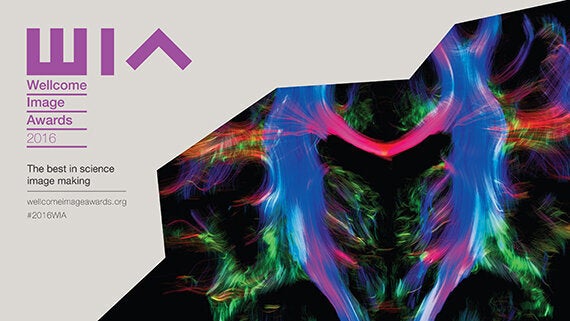
The winners of the 2016 Wellcome Image Awards were announced on 15 March at a ceremony at the Science Museum in London. The Wellcome Image Awards showcase the best in science image making and recognise the creators of the most informative, striking and technically excellent images that communicate significant aspects of biomedical science. For the first time in the Awards' 19 year history, an illustration claimed the top prize. Meet this year's 20 winning images...
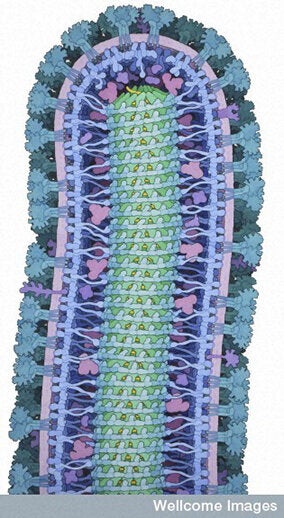
Ebola virus. David S Goodsell, RCSB Protein Data Bank/Wellcome Images.
A meticulously hand-painted watercolour and ink illustration by David Goodsell showing the molecular landscape inside an Ebola virus particle was chosen as the overall winner. Fergus Walsh, BBC Medical Correspondent and host for the evening said "This is a stunning illustration of a deadly pathogen - a cross-section through an Ebola virus particle. The judges felt that this watercolour and ink image elegantly displayed the biological structure of a virus which has caused such devastation in West Africa."
Hear more from David about how he creates these intricate paintings in this short film:
Illustrating Ebola | David S Goodsell. Filmed by Chadwick Trentham, edited by Gary Tobyn and produced by Chris Chapman.
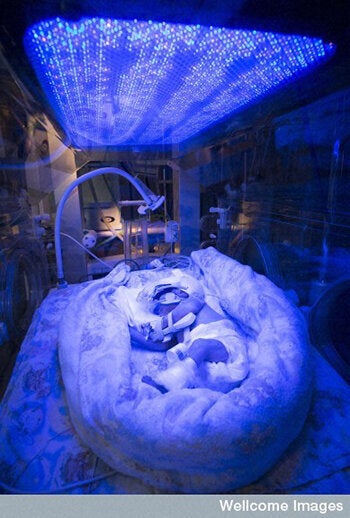
Premature baby receiving light therapy. David Bishop, Royal Free Hospital, London/Wellcome Images.
This year also saw the launch of the new Julie Dorrington Award for outstanding photography in a clinical environment. David Bishop's sensitive photograph of a premature baby receiving ultraviolet light therapy to treat jaundice was selected as the first recipient of this new Award. The Award honours one of the founders of Wellcome Images clinical collection and celebrates her contribution to Wellcome and to the clinical photography profession. Fergus explained "Cocooned in an incubator, a tiny premature baby sleeps while receiving ultraviolet phototherapy to combat the threat of jaundice. The whole image is cast in a beautiful blue light - the judges felt it perfectly captured the vulnerability of a newborn, whilst keeping a respectful and discreet distance from the subject."
The overall winner and Julie Dorrington winner fought off stiff competition from 1500 other images submitted to Wellcome Images in the past year. 18 other images were chosen by the judges, a panel of experts from medical science and science communication:
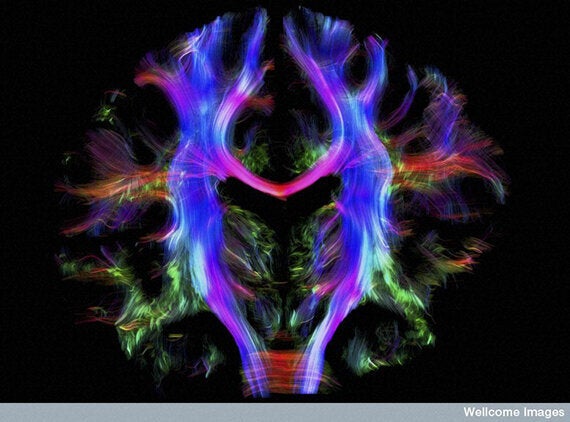
Wiring the human brain. Alfred Anwander, Max Planck Institute for Human Cognitive and Brain Sciences/Wellcome Images.
Alfred Anwander's mesmerising image used magnetic resonance imaging (MRI) based tractography to reveal pathways of nerve fibres inside a living person's brain.
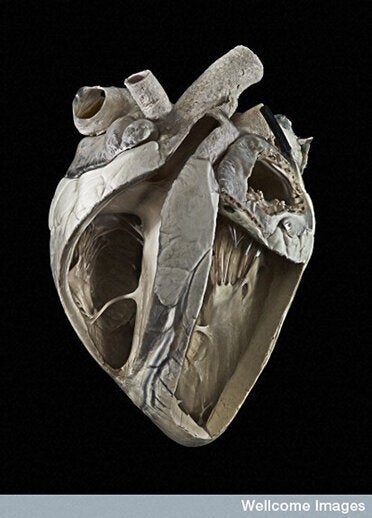
Cow heart. Michael Frank, Royal Veterinary College/Wellcome Images.
Last year's overall winner Michael Frank returned this year to collect an Award for his photograph which shows the structure of a preserved heart from an adult cow making it appear almost sculptural.
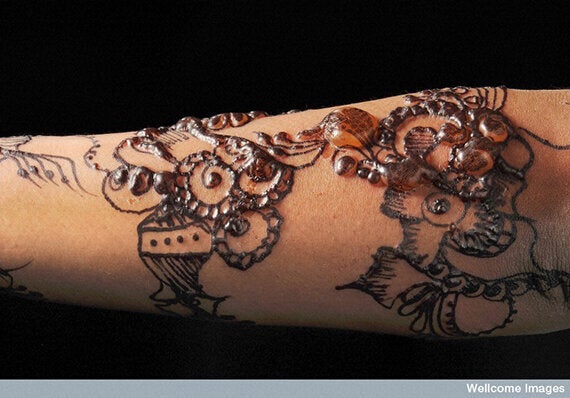
Black henna allergy. Nicola Kelley, Cardiff and Vale University Hospital NHS Trust/Wellcome Images.
Have you ever considered that using 'black henna' could put your health at risk? Nicola Kelley's clinical photograph documents the early stage of a young girl's allergic reaction to the black chemical dye (PPD) used in a henna tattoo.

Inside the human eye. Peter Maloca, University of Basel/Wellcome Images.
Peter Maloca's 3D image inside blood vessels in the back of the eye looks like a maze of tunnels underground. It was created using information from a 3D optical coherence tomography scan which works in a similar way to ultrasound but uses laser light instead of sound waves to produce cross-sectional images.
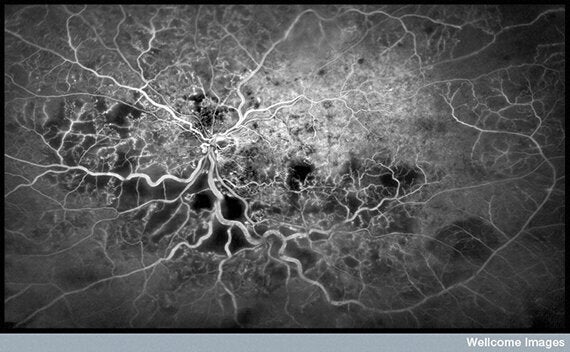
Blood vessels in the eye. Kim Baxter, Cambridge University Hospitals NHS Foundation Trust/Wellcome Images.
What do you see when you look at this image? A cityscape at night, a network of rivers or a distant view into space perhaps? Kim Baxter's clinical photograph shows a different view of blood vessels in the eye.
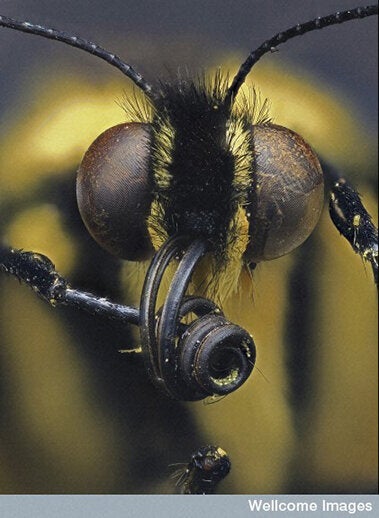
Swallowtail butterfly. Daniel Saftner, Macroscopic Solutions/Wellcome Images.
From the human eye to an insect eye, Daniel Saftner's close-up view of the head of a swallowtail butterfly shows in sharp detail its compound eyes and curled up feeding tube which it unrolls to drink nectar from flowers.
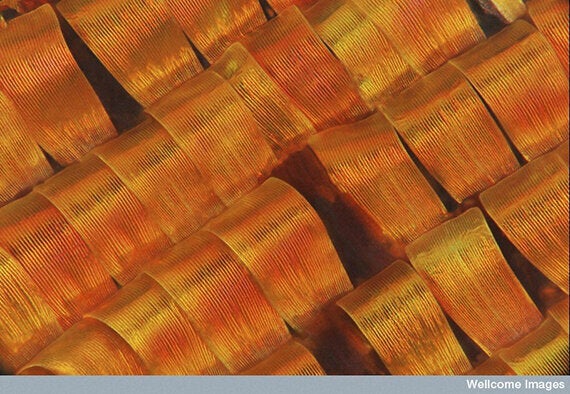
Moth scales. Mark R Smith, Macroscopic Solutions/Wellcome Images.
The bright colours in Mark Smith's photomacrograph of scales on a Madagascan sunset moth are in fact more of an optical illusion as they hardly contain any colour pigment. The apparent colours in this moth come from light bouncing off the curved scales at different angles.
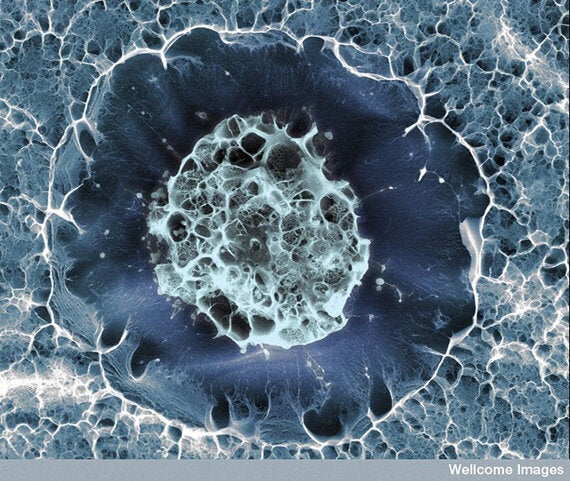
Human stem cell. Sílvia A Ferreira, Cristina Lopo and Eileen Gentleman, King's College London/Wellcome Images.
This cryogenic scanning electron micrograph by Sílvia Ferreira, Cristina Lopo and Eileen Gentleman, shows a single stem cell taken from bone marrow inside the hip bone of a person.
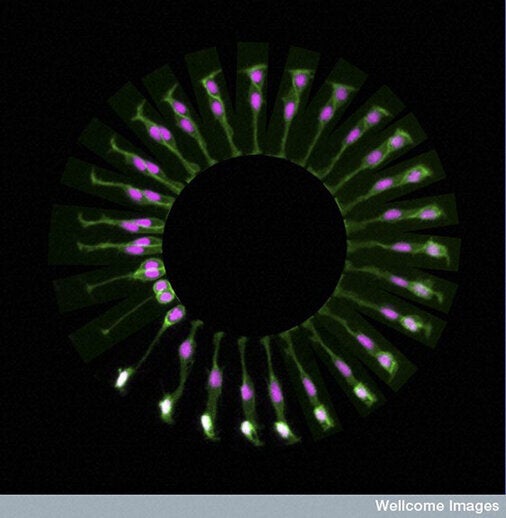
Dividing stem cell in the brain. Paula Alexandre, University College London/Wellcome Images.
This circular pattern is a series of images taken by Paula Alexandre over 9 hours, showing a stem cell dividing into two in the brain of a zebrafish embryo before it hatches.

Raynaud's disease. Matthew Clavey, Thermal Vision Research/Wellcome Images.
Thermal imaging accurately measures changing patterns of heat. Here in Matthew Clavey's image, it shows how a healthy hand (left) warms faster after exposure to cold than the hand from a person with Raynaud's disease (right).
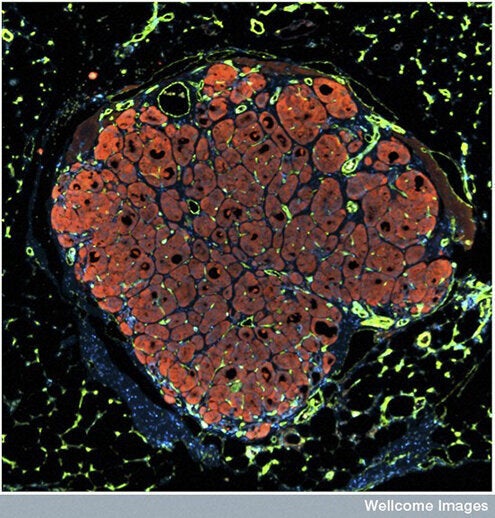
Engineering human liver tissue. Chelsea Fortin, Kelly Stevens and Sangeeta Bhatia, Koch Institute, © MIT/Wellcome Images.
The liver is one of the few tissues in the body that has the ability to regenerate itself. Chelsea Fortin, Kelly Stevens and Sangeeta Bhatia are trying to harness that ability in the hope that one day small implants could be used to repair livers damaged by liver disease, cirrhosis or cancer.
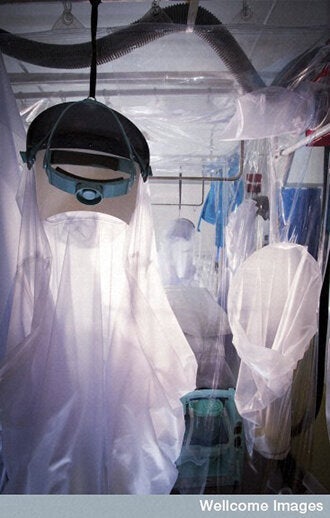
Infectious disease containment unit. David Bishop, Royal Free Hospital, London/Wellcome Images.
The high-level containment unit at the Royal Free hospital in London is something we all hope never to experience. Glimpse inside it here with David Bishop's haunting photograph of this restricted area.
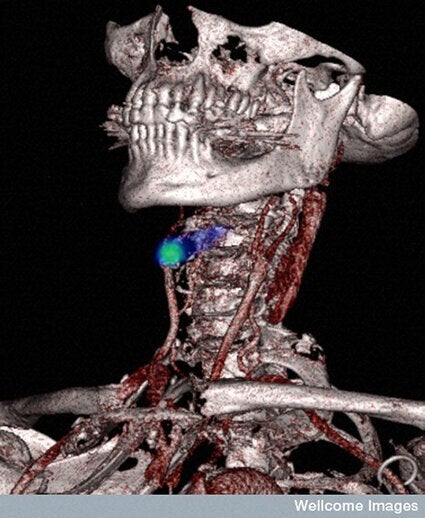
Detecting stroke. Nicholas Evans, University of Cambridge/Wellcome Images.
Can you detect a stroke before it strikes? Nicholas Evans is investigating exactly that, by combining two types of medical scan to identify potential danger zones in blood vessels before they burst in order to treat them.

Clathrin cage. Maria Voigt, RCSB Protein Data Bank/Wellcome Images.
The second illustration to win an Award this year is this digital artwork by Maria Voigt. Created from experimentally obtained scientific data, this image reveals the 3D structure of a transport molecule found inside cells.
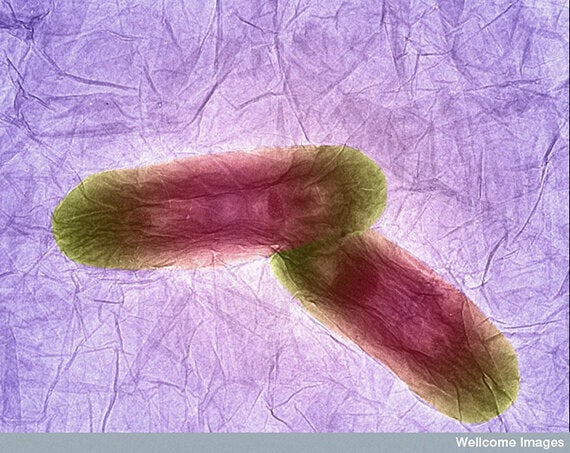
Bacteria on graphene oxide. Izzat Suffian, Kuo-Ching Mei, Houmam Kafa and Khuloud T Al-Jamal, King's College London/Wellcome Images.
King's College London picked up their second Award for the night with this transmission electron micrograph by Izzat Suffian, Kuo-Ching Mei, Houmam Kafa and Khuloud Al-Jamal. Two rod-shaped bacteria sit on a sheet of graphene which is only one carbon atom thick.
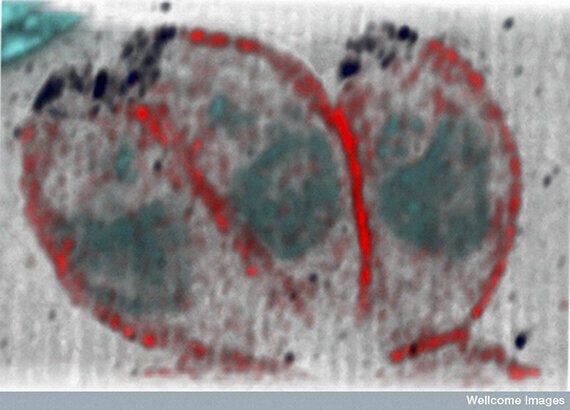
Toxoplasmosis-causing parasites. Leandro Lemgruber, University of Glasgow/Wellcome Images.
This super-resolution micrograph reveals 3 parasites which cause the disease Toxoplasmosis. Taken by Leandro Lemgruber, the level of detail visible inside these parasites was achieved using light microscopy down to a level that was thought impossible for many years.
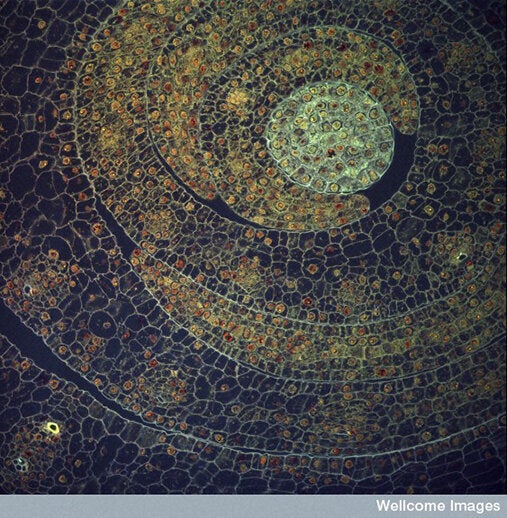
Fernán Federici, Pontificia Universidad Católica de Chile and University of Cambridge/Wellcome Images.
Looking inside a cluster of plant leaves uncovers a complex, intricate structure, captured so beautifully here by Fernán Federici.

Bone development. Frank Acquaah/Wellcome Images.
Our bone structure changes as we develop in the womb and even as we grow in the first few years of life. Using micro-computed tomography, Frank Acquaah was able to virtually cut out sections of bone from the skeletal remains of children from the 19th century, without damaging the precious remains.
Get up close to these images for yourself and visit one of the 15 exhibitions now open across the UK, Europe and Africa. See the Awards website for a full list of venues or for more information about the images and the stories behind them.
Do you agree with the judges? Vote for your favourite for your chance to win a photographic print.
Hear more from the judges as they discuss the winning images in this short film:
The Judges Discuss The Winning Images. Filmed and produced by Simon Moore.
Wellcome Images is one of the world's richest and most distinctive image collections, covering themes ranging from medical and social history to contemporary healthcare and biomedical science. It is part of the Wellcome Trust, a global charitable foundation dedicated to improving health.
This post first appeared on the Wellcome Trust blog. Sabrina works for Wellcome Images and is responsible for sourcing new biomedical imagery for inclusion in Wellcome Images' collections and also project manages the Wellcome Image Awards.